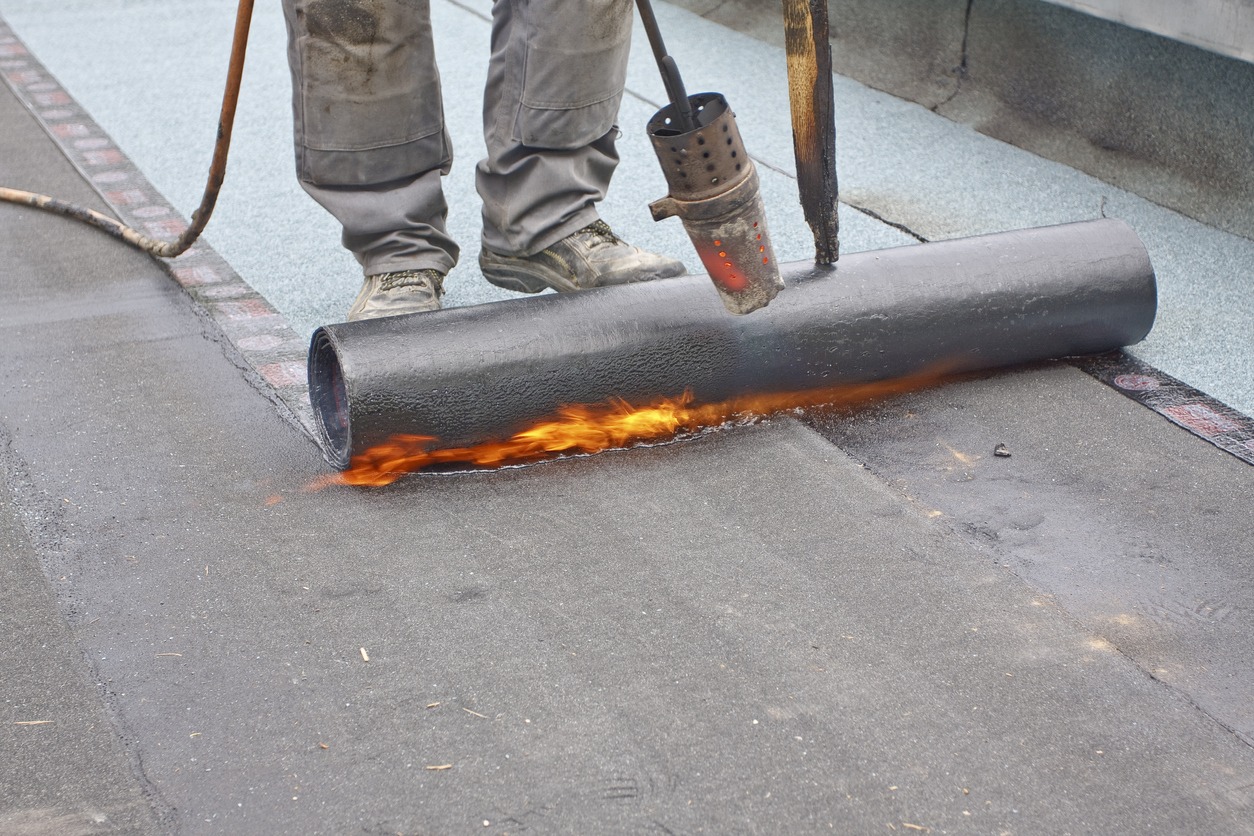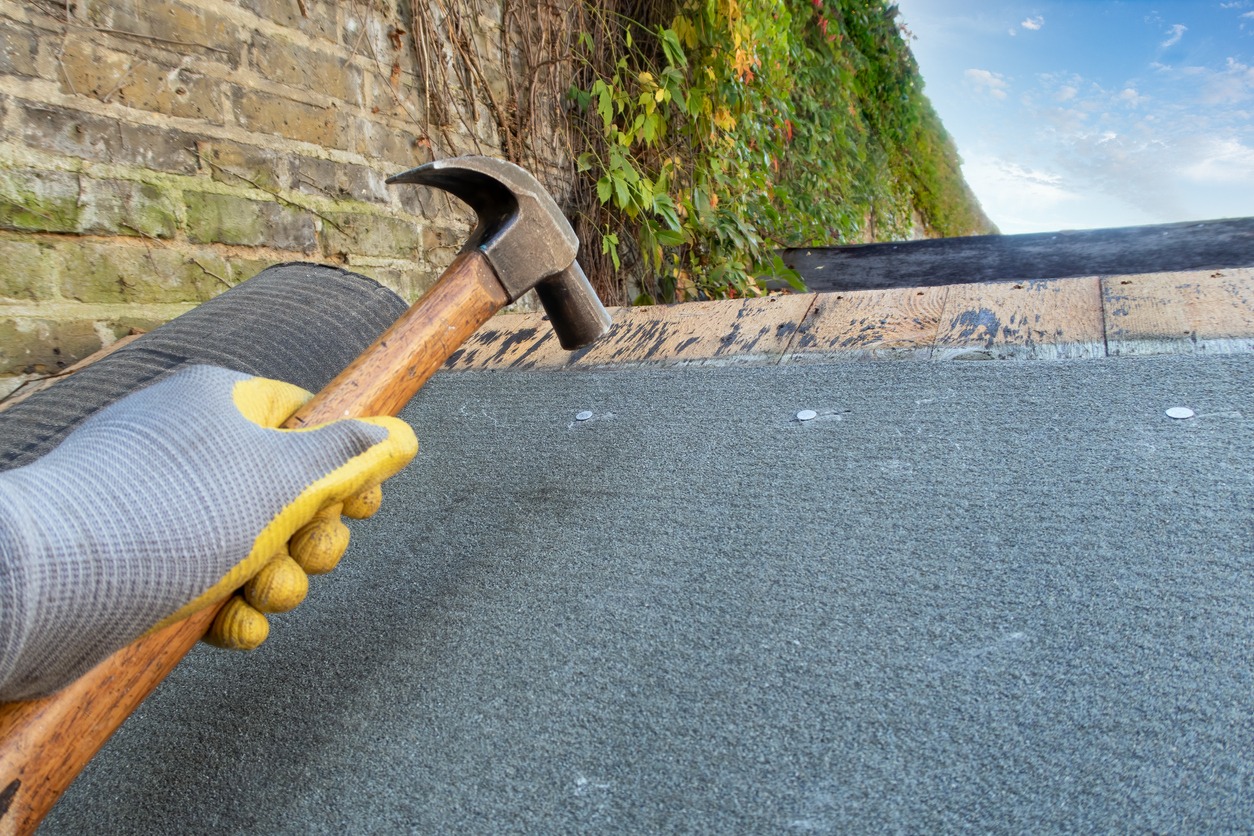Roofing felt is also known as roofing underlayment or tar paper. It is an important component in modern roofing systems. It is used as a protective layer that is installed between the roof deck and the final roofing material, such as shingles or tiles. For decades, roofing felt has been used and remains an important element in residential, commercial, and industrial roofing applications.
It is a thin, flexible material made from organic or synthetic fibers. It is also saturated with asphalt or bitumen to enhance its water-resistant properties. It comes in rolls and is usually black or brown, but other varieties also exist. Roofing felt has a lot of uses when it comes to construction and roof protection.
If you are interested to learn more about it, you’re in the right place. In this article, we are going to give you a comprehensive understanding of roofing felt. This includes the different types of roofing felt materials, the benefits of using roofing felt, and more. Read on to learn more about what roofing felt is.
Understanding Roofing Felt
Roofing felt is also called tar paper or roofing underlayment. It is made of a thin, flexible material that is used in roofing construction. It is manufactured from either organic or synthetic fibers, which impart various characteristics to the material. Organic roofing felts are made from cellulose fibers, which are usually sourced from recycled paper or wood pulp.
Synthetic roofing felts, on the other hand, are composed of fiberglass or polyester fibers, which offer enhanced durability and strength. But both types of roofing felts are impregnated with asphalt or bitumen to provide water resistance to roofs.
The Different Types of Roofing Felt Materials
To further help you understand what roofing felt is, below are some of the materials it is made of:
- Asphalt-Saturated Felt: This is commonly referred to as “15-pound” or “30-pound” felt. It is the traditional and widely used roofing underlayment. It is available in different weights, with 15-pound felt being lighter and 30-pound felt offering higher durability and strength. This type of roofing felt is relatively affordable, and it can provide basic water resistance and protection.
- Synthetic Roofing Underlayment: This one is a newer alternative to traditional asphalt-saturated felt. It is made from fiberglass or polyester, which provides excellent tear resistance and UV stability. This type is also lighter compared to their organic counterparts, making them easier to handle and install. They also usually have enhanced slip resistance, making them safer for roofers during installation.
- Rubberized Asphalt Underlayment: This type combines asphalt with rubber polymers to enhance its waterproofing capabilities. It offers superior flexibility and adhesion, making it a great choice for challenging roof shapes and slopes. It is also self-sealing around nails and fasteners, providing an additional layer of protection against leaks.
Advantages and Benefits of Using Roofing Felt
There are several advantages and benefits that you can get with the use of roofing felts. These make it a critical component in roofing systems. From providing waterproofing capabilities to enhancing roof durability, understanding these advantages can help homeowners and contractors appreciate the importance of roofing felt in construction. Below are the different advantages and benefits of using roofing felt:
Waterproofing Properties
One of the main benefits of roofing felt is its ability to create a waterproof barrier. Since it is permeated with asphalt or bitumen, it can prevent water from penetrating the roof deck and causing leaks. Aside from that, it also acts as a reliable line of defense against snow, rain, and other forms of precipitation.
Protection Against Leaks and Moisture
Roofing felt helps in sealing gaps and seams between the roof deck and the final roofing material effectively. Doing this prevents water from seeping into the underlying structure, protecting it from moisture-related damage, such as rot and mold. Also, in case shingles or tiles become damaged or displaced, roofing felt can be used as a temporary barrier until repairs are made.
Additional Layer of Insulation
Roofing felt also serves as an extra layer of insulation, contributing to the overall energy efficiency of the building. It can help reduce heat transfer between the roof and the interior, which can keep the building cooler in hot climates and warmer in cold climates. The insulation property of roofing felt can lead to energy savings and lower utility bills.
Enhanced Roof Durability and Lifespan
Since roofing felt protects the roof deck from water damage and moisture, it also contributes to the overall longevity of the roofing system. It helps preserve the structural integrity of the roof and prevents premature deterioration. With proper installation and maintenance, roofing felt can help extend the lifespan of your roof.
Impact on Energy Efficiency
The added insulation provided by roofing felt can decrease the need for excessive heating or cooling, leading to energy conservation. When your roof is energy-efficient, it contributes to green building practices and may qualify for certain energy-related incentives or certifications.
Versatility and Compatibility
Roofing felt can be used with different roofing materials, such as tiles, metal roofing, or shingles. You can also use it in a wide range of roof types and configurations, making it a versatile choice for different construction projects. Roofing felt can be cut and fitted easily around obstacles, ensuring a proper and secure installation. If you are curious on whether roofing felt can be used for walls or not, you can read our article, “Can Roofing Felt Be Used on Walls?,” for answers.
Temporary Weather Protection During Roof Installation
During roof installation or repair, roofing felt can be used as temporary weather protection for the roof deck. This protection is important, particularly in case of unexpected weather events that may occur during the construction process.
Roofing Felt Maintenance and Replacement
When using roofing felt, regular maintenance and timely replacement are crucial to maintain the integrity and effectiveness of the roofing system. With proper care and maintenance, you’ll be able to identify potential issues early on and prevent more significant problems in the future. Below are some of the things you may consider when it comes to maintaining and replacing roofing felt:
Inspecting Roofing Felt for Damage
It is essential to conduct periodic visual inspections of the roofing felt to check for signs of damage, wear, or tear. Try to look for cracks, tears, or holes in the material that could compromise its water-resistant properties. You should also check for signs of water stains or moisture on the roofing felt, which indicate possible leaks.
Repairing Minor Issues
When there are minor damages, such as small tears or punctures, make sure that you do the necessary repairs to extend the life of the roofing felt. You may use patching materials specifically designed for roofing felt to seal small holes or tears. You may apply roofing cement or sealant around damaged areas to reinforce the waterproofing.
When to Replace the Roofing Felt
The lifespan of a roofing felt usually ranges from 15 to 30 years, depending on its type and quality. If there is significant wear, deterioration, or water damage, it may be time to replace it. Other signs that you need to replace your roofing felt include age-related degradation like brittleness or excessive curling, or if the roof is being re-shingled or re-tiled.
Regular Roof Maintenance
It is important that you implement a comprehensive roof maintenance plan that includes regular inspections of the roofing systems, including the roofing felt. Always keep your gutters and downspouts clean to prevent water backup and possible damage to the roofing felt.
Roofing felt maintenance and replacement can be challenging for many homeowners, and it is also dangerous for untrained individuals. Therefore, if you are unsure of the condition of your roofing felt or how to proceed with repairs or replacement, it is best to consult a professional roofing contractor.
Conclusion
Roofing felt is indeed an important part of modern roofing systems. It can help protect homes and buildings from water infiltration, leaks, and moisture-related damage. Having properly installed and maintained roofing felt can provide the needed foundation for a durable and resilient roof, contributing to the overall integrity and longevity of your home. Therefore, if you want to make your home sustainable and well-protected, the use of roofing felt is a good idea. We hope this article helped you learn more about what roofing felt is.



